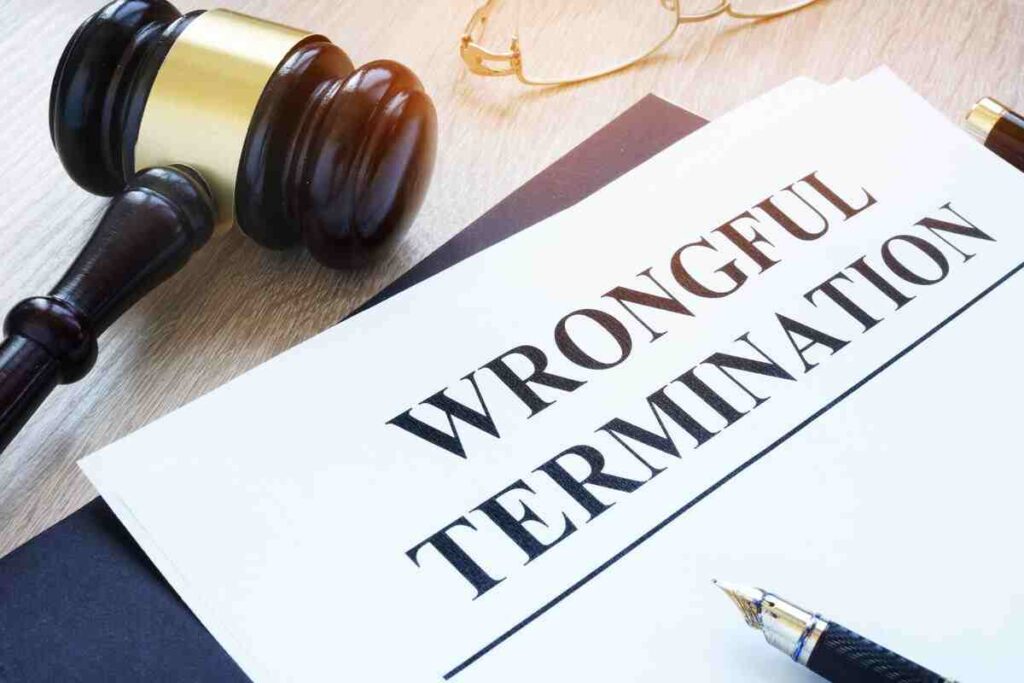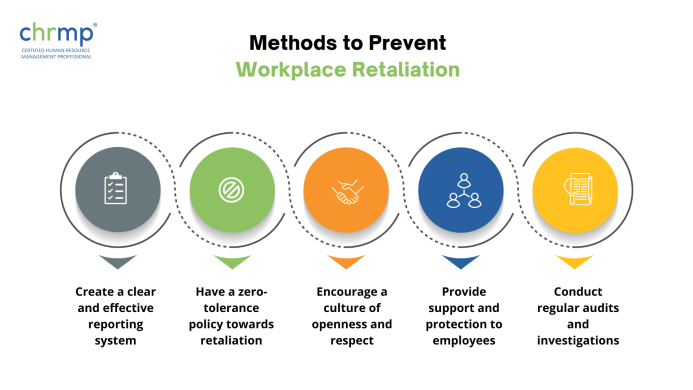
Understanding Wrongful Termination Laws: Your Guide to Employee Rights
Losing a job can be a devastating experience, leaving you feeling confused, angry, and uncertain about your future. While employers generally have the right to fire employees for many reasons, there are crucial exceptions. If you suspect you were fired for an illegal or unfair reason, you might be dealing with what’s known as wrongful termination.
This comprehensive guide is designed to help you understand the complexities of wrongful termination laws, what your rights are, and what steps you can take if you believe your termination was unlawful.
What Exactly Is Wrongful Termination?
In its simplest terms, wrongful termination occurs when an employer fires an employee for an illegal reason. It’s not just about feeling like you were treated unfairly; it’s about whether your employer violated a specific law, contract, or public policy when they ended your employment.
To understand wrongful termination, it’s essential to first grasp the concept of "at-will employment," which is the default rule in most parts of the United States.
The "At-Will" Employment Doctrine
Most U.S. states operate under the principle of "at-will employment." This means that:
- An employer can terminate an employee for any reason, or no reason at all, as long as that reason isn’t illegal.
- An employee can also leave a job for any reason, or no reason at all, without notice.
While this doctrine gives employers broad discretion, it’s not an absolute right. There are significant exceptions that form the basis of wrongful termination claims.
Key Categories of Wrongful Termination: When "At-Will" Doesn’t Apply
Even in "at-will" states, employers cannot fire you if doing so violates:
- Anti-Discrimination Laws
- Anti-Retaliation Laws
- An Implied or Express Employment Contract
- Public Policy
Let’s break down each of these crucial categories.
1. Discrimination
One of the most common grounds for a wrongful termination claim is discrimination. Federal and state laws prohibit employers from firing or taking other adverse actions against employees based on certain "protected characteristics."
Federally Protected Characteristics include:
- Race: Discrimination based on a person’s race or characteristics associated with race (e.g., hair texture, skin color).
- Color: Discrimination based on skin pigmentation or complexion.
- Religion: Discrimination based on religious beliefs, practices, or observances. This includes accommodating religious practices.
- Sex/Gender: Discrimination based on a person’s sex, including pregnancy, childbirth, and related medical conditions, as well as gender identity and sexual orientation.
- National Origin: Discrimination based on a person’s country of origin, ancestry, ethnicity, or accent.
- Age: Discrimination against individuals who are 40 years of age or older (under the Age Discrimination in Employment Act – ADEA).
- Disability: Discrimination against qualified individuals with a disability (under the Americans with Disabilities Act – ADA), requiring reasonable accommodation unless it poses an undue hardship.
- Genetic Information: Discrimination based on genetic information, including family medical history (under the Genetic Information Nondiscrimination Act – GINA).
State and Local Laws Often Add More Protections:
Many states and cities have their own laws that protect additional characteristics, such as:
- Marital status
- Political affiliation
- Veteran status
- Sexual orientation (even if not federally covered in some contexts)
- Gender identity (even if not federally covered in some contexts)
- Medical conditions (beyond just disabilities)
- Source of income
- Caregiver status
How Discrimination Might Look in a Termination:
- Being fired shortly after announcing a pregnancy.
- An older employee being replaced by a much younger, less experienced one, despite good performance.
- Being terminated after requesting a religious accommodation.
- Being fired after revealing a disability, especially if you could perform your job with reasonable accommodation.
2. Retaliation
Retaliation is another significant area of wrongful termination. It occurs when an employer fires an employee because they engaged in a legally protected activity. Essentially, the employer is punishing the employee for exercising their rights.
Common Protected Activities include:
- Reporting Discrimination or Harassment: Filing a complaint, either internally with HR or externally with an agency like the EEOC, about discrimination, sexual harassment, or other illegal workplace conduct.
- Whistleblowing: Reporting illegal or unethical activities by the employer to government authorities (e.g., fraud, environmental violations, safety hazards).
- Exercising Rights Under Wage & Hour Laws: Complaining about unpaid overtime, minimum wage violations, or other violations of the Fair Labor Standards Act (FLSA).
- Taking Protected Leave: Using leave protected by laws like the Family and Medical Leave Act (FMLA) for serious health conditions, childbirth, or caring for a family member.
- Filing a Workers’ Compensation Claim: Reporting a work-related injury or illness and seeking benefits.
- Participating in an Investigation: Cooperating with an internal or external investigation into illegal workplace practices.
- Union Activities: Engaging in protected union activities or attempting to form a union.
- Jury Duty or Military Service: Taking time off for these civic duties.
How Retaliation Might Look in a Termination:
- Being fired immediately after you reported sexual harassment to your manager or HR.
- Your employer terminating you a week after you filed a workers’ compensation claim for a workplace injury.
- Being let go shortly after you testified in a co-worker’s discrimination lawsuit against the company.
3. Breach of Contract
While most employment is at-will, some employees have employment contracts that outline the terms of their employment, including how and when they can be terminated. If an employer fires an employee in violation of these contractual terms, it can be a wrongful termination.
Types of Employment Contracts:
- Express Written Contracts: These are formal, written agreements signed by both the employer and employee. They might specify a fixed term of employment (e.g., 2 years) or list specific reasons for which an employee can be fired ("for cause" clauses, such as gross misconduct or poor performance after specific warnings).
- Implied Contracts: These are less formal and can be created through:
- Employee Handbooks or Policy Manuals: If a handbook outlines a progressive disciplinary policy (e.g., warning, suspension, then termination), and the employer fires someone without following these steps, it might be a breach of an implied contract.
- Oral Promises: Verbal assurances from management that you would only be fired for "good cause" or that your job was "for life" could, in rare cases, form an implied contract. These are often difficult to prove.
How Breach of Contract Might Look in a Termination:
- Being fired without the "just cause" required by your written employment contract.
- Your employer terminating you without following the progressive disciplinary steps outlined in the company’s official employee handbook.
4. Violation of Public Policy
This is a broad category, but it essentially means that an employer cannot fire an employee for reasons that violate a fundamental public policy established by law.
Common Examples of Public Policy Violations:
- Refusing to Commit an Illegal Act: Being fired because you refused to break the law on behalf of your employer (e.g., refusing to falsify financial records, refusing to dump toxic waste illegally).
- Exercising a Legal Right or Obligation:
- Being fired for attending jury duty.
- Being fired for serving in the military (covered by USERRA).
- Being fired for filing a legitimate workers’ compensation claim (overlaps with retaliation).
- Being fired for reporting patient abuse (for healthcare workers).
How Public Policy Violations Might Look in a Termination:
- Your employer firing you after you reported a serious safety violation at the workplace to OSHA.
- Being terminated because you had to miss work to serve on a jury.
5. Constructive Discharge (A Form of Wrongful Termination)
Sometimes, an employer doesn’t directly fire an employee, but they make the working conditions so intolerable that a reasonable person would feel forced to resign. This is known as constructive discharge (or constructive termination).
If you can prove that your employer deliberately created or allowed such hostile conditions with the intent to force you to quit, your resignation can be treated legally as if you were fired, allowing you to pursue a wrongful termination claim.
Examples of Conditions Leading to Constructive Discharge:
- Severe and pervasive harassment (sexual, racial, etc.) that management ignores or encourages.
- Significant demotion, pay cut, or reduction in responsibilities without legitimate cause.
- Being assigned duties designed to make you fail or that are dangerous and outside your job description.
- Being subjected to extreme isolation or public humiliation.
What Is NOT Wrongful Termination?
It’s equally important to understand what typically does not constitute wrongful termination, even if it feels unfair:
- Poor Performance: If your employer can document your poor performance, failure to meet expectations, or lack of necessary skills, it’s generally a valid reason for termination.
- Personality Conflicts: While unpleasant, a clash with a manager or co-worker, if not tied to discrimination or harassment, is usually not illegal grounds for firing.
- Company Downsizing or Restructuring: If a company genuinely needs to reduce its workforce for economic reasons, and the layoffs are not discriminatory, it’s generally lawful.
- Violation of Company Policy: If you violate a legitimate company policy (e.g., attendance policy, code of conduct, safety rules), your employer can typically fire you.
- Lack of "Fit": Unless tied to a protected characteristic, an employer can often fire someone because they are not a "good fit" for the company culture.
What to Do If You Suspect Wrongful Termination: Your Action Plan
If you believe you’ve been wrongfully terminated, taking the right steps immediately can significantly impact your ability to pursue a claim.
1. Document Everything
- Gather All Relevant Documents: This includes your employment contract, offer letter, employee handbook, performance reviews, disciplinary notices, emails, text messages, and any communications related to your termination.
- Take Notes: Write down everything you remember about the events leading up to your termination, including dates, times, names of individuals involved, and specific conversations. Be as detailed as possible.
- Keep a Journal: Document any ongoing issues, discriminatory remarks, or retaliatory actions while you are still employed, if possible.
2. Review Your Employee Handbook & Company Policies
Your employer’s own documents can be powerful evidence. See if the company followed its stated disciplinary procedures or if your termination violated any promises made in the handbook.
3. Do Not Sign Anything Hasty!
If your employer offers you a severance package, be extremely cautious. These agreements often require you to waive your right to sue the company in exchange for the severance pay.
- Do NOT sign it immediately. You have a right to review it, and for age discrimination claims, you have at least 21 days (and 7 days to revoke after signing).
- Consult with an attorney before signing any severance agreement. They can advise you on your rights and whether the offer is fair given your potential claims.
4. Understand Your Deadlines (Statute of Limitations)
This is CRITICAL. There are strict deadlines, known as statutes of limitations, for filing wrongful termination claims. These deadlines vary depending on the type of claim and the jurisdiction (federal vs. state).
- For Federal Discrimination/Retaliation Claims (EEOC): You typically have 180 or 300 days from the date of the discriminatory act to file a charge with the Equal Employment Opportunity Commission (EEOC). Missing this deadline can permanently bar your claim.
- For State Law Claims: Deadlines for state discrimination claims, breach of contract, or public policy violations can vary widely, from a few months to several years.
Do not delay! The sooner you act, the better your chances of preserving your legal options.
5. Consult with an Experienced Employment Law Attorney
This is perhaps the most important step. An attorney specializing in employment law can:
- Evaluate Your Case: Determine if you have a valid wrongful termination claim based on the facts and applicable laws.
- Advise on Your Rights: Explain your legal options and the potential remedies available to you.
- Help Gather Evidence: Guide you on what additional documentation or information you might need.
- Negotiate on Your Behalf: Attempt to reach a settlement with your former employer.
- Represent You: If necessary, file a charge with the appropriate agency (like the EEOC) or pursue a lawsuit in court.
Many employment attorneys offer free initial consultations, so there’s little to lose by seeking professional advice.
The Legal Process: What Happens Next?
If you decide to pursue a wrongful termination claim, the process typically involves these stages:
- Filing a Charge with an Administrative Agency: For most discrimination and retaliation claims, you must first file a "charge of discrimination" with the Equal Employment Opportunity Commission (EEOC) or your state’s equivalent fair employment practices agency (e.g., California’s DFEH, New York’s DHR). This is often a prerequisite to filing a lawsuit.
- Agency Investigation/Mediation: The agency may investigate your claim, gather evidence, and/or offer mediation services to try and resolve the dispute.
- Right-to-Sue Letter: If the agency does not find sufficient evidence or is unable to resolve the dispute, they will issue a "right-to-sue" letter, which allows you to file a lawsuit in court.
- Lawsuit (Litigation): If a settlement isn’t reached, your attorney may file a lawsuit in federal or state court. This involves:
- Discovery: Both sides exchange information and evidence.
- Motions: Legal arguments made to the court.
- Mediation/Settlement Negotiations: Attempts to resolve the case outside of trial.
- Trial: If no settlement is reached, the case goes to trial before a judge or jury.
Potential Remedies for Wrongful Termination
If you win a wrongful termination case, you could be awarded various forms of compensation, known as "damages":
- Back Pay: Lost wages and benefits from the date of termination until the date of judgment or settlement.
- Front Pay: Compensation for future lost wages if reinstatement is not feasible.
- Emotional Distress/Pain and Suffering: Compensation for the emotional toll, anxiety, and mental anguish caused by the termination.
- Punitive Damages: In cases where the employer’s conduct was particularly egregious or malicious, punitive damages may be awarded to punish the employer and deter similar conduct.
- Attorney’s Fees and Costs: In many employment law cases, if you win, the employer may be required to pay your legal fees and court costs.
- Reinstatement: In some cases, you might be offered your job back, though this is less common due to potential ongoing workplace tensions.
Important Considerations and Final Tips
- Evidence is Key: The success of any wrongful termination claim hinges on strong evidence. Document everything, keep records, and be prepared to explain your story clearly.
- Do Not Rely on Hearsay: While frustrating, what your co-worker "heard" about your termination is usually not admissible evidence. Focus on direct observations and communications.
- Mitigate Your Damages: After being fired, you generally have a legal duty to "mitigate your damages" by actively seeking new employment. This means you can’t just sit back and claim lost wages; you need to show you were looking for work.
- Be Realistic: Not every unfair firing is illegal. An attorney can help you understand the difference and set realistic expectations for your case.
- Confidentiality: Be careful about discussing your situation publicly, especially on social media, as it could potentially harm your case.
Conclusion
Losing your job is never easy, but understanding your rights under wrongful termination laws is the first step toward protecting yourself and seeking justice. While the "at-will" doctrine gives employers broad power, it does not give them the right to violate anti-discrimination, anti-retaliation, contract, or public policy laws.
If you suspect your termination was illegal, don’t hesitate. Gather your documents, note down the details, and contact an experienced employment law attorney as soon as possible. They can help you navigate the complex legal landscape and determine the best course of action for your unique situation. Your future and your rights are worth protecting.
Disclaimer: This article provides general information about wrongful termination laws and is not intended as legal advice. Laws vary by jurisdiction, and the specific facts of your situation are crucial. You should consult with a qualified employment law attorney for advice tailored to your individual circumstances.



Post Comment